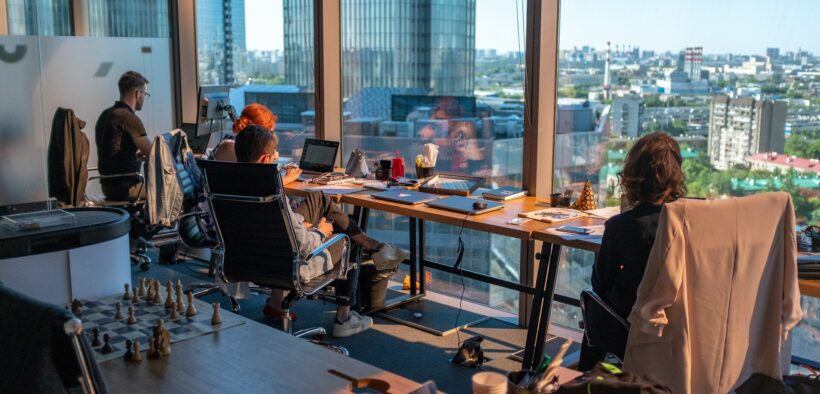Share

Over the past couple of weeks, there have been countless heated discussions and news stories circulating about the importance of workers returning to the CBD offices for a minimum of three days a week. This comes as many business owners are feeling the pressure from local governments and stakeholders to help bring a resurgence back to our city life and also increase workplace productivity levels.
The hybrid work week has and will continue to be a contentious topic, particularly amongst creative and marketing agencies, with many experts advocating for the essential need for a communal workspace. Adam Ferrier, the founder of creative agency Thinkerbell even went as far as to say that if we continue to work from home, we will “begin to become less human, less conscious and less able.” However, on the other hand, many agencies have also reported positive changes to their workplace culture and environment, now being able to have access to talent from all across the world, whilst enjoying more freedom and autonomy and cutting down on unnecessary time spent commuting and hosting extended meetings.
Regardless of where you sit when it comes to the discussion, every employer will at some point in the future need to determine where they stand on ‘return-to-office’ life. And if that’s you, here are six key considerations you should make.
Examine culture and sentiment – why do you want people back in the office?
In your workplace, are there genuine, meaningful reasons to bring people back together, such as improved collaboration or team brainstorming? Are you going to see increased connection and engagement by doing so? The current workplace post pandemic is less about ‘command and control’ and more about creating an experience of work that is empowering and authentic for the individual and teams.
Keep an eye on your competitors – what are your biggest competitors or fellow industry members doing?
Stop and consider, what are other people in your sector doing and how are they navigating the return to work? Look at what they are offering their people in terms of flexibility and the opportunities they are providing them to design their own return-to-work experience. By examining this, you can consider what is attractive to staff and what is most likely to retain them for the long term. This is also incredibly helpful to understand best industry practice and either follow suit or create your own unique office experience.
Are you willing to curate the experience – what are people getting from being in the office that they aren’t getting from home?
We often look at what is appealing about working from home, but why not flip the switch and see what is most attractive from a centralised office perspective? Is it social connection, networking, access to better or different amenities or facilities? The office should be different from home and offer something extra to people. How leaders design the experience of being back in the office will be key to engagement and to a safe, enjoyable return.
Review the working environment – does my workplace offer the same flexibility as hybrid working?
In this return-to-office life, does the workplace still support new behaviours and new ways of hybrid working? What are the acoustics like now that people are undertaking video calls from their desks more than ever before? Are there too many desks in the open plan and not enough quiet spaces? Are more tech-enabled collaboration walls or rooms needed? Legacy (pre-covid) workspace will need to be re-engineered quickly in order to accommodate new ways of working and ensure the office is somewhere that people can work as efficiently and effectively as they do at home.
Leadership and learning – are my staff still learning and growing?
It’s no secret that many young workers are advocating for a return to the office, as they are able to access wider mentoring from their experienced peers. But getting the hybrid blend right will be critical to ensuring that tacit knowledge is shared and that there is the opportunity for everyone across the organisation to learn from each other, not just the junior team members. This will ensure you are able establish greater longevity of your teams’ expertise and experience.
Office Ergonomics – how do we blend the WFH experience into a workplace experience?
Working from home has opened up a range of ergonomic options such as working at kitchen tables, living room sofas and outdoor patios. In the return to office, you need to ensure that your staff have the same level of office flexibility to move around to suit their working styles. It is also important to ensure they can have the same ease of access to the benefits of home, such as the coffee machine, food storage/fridges, comfortable seating, and access to fresh air.
By Angela Ferguson, partner and co-founder of Future X Collective.









